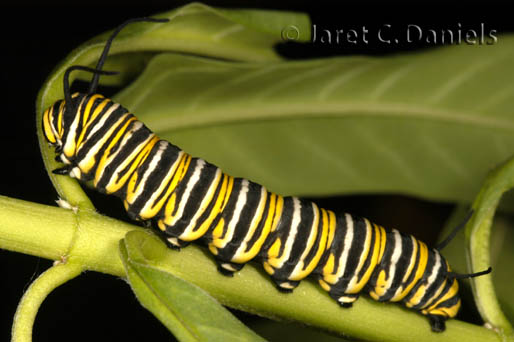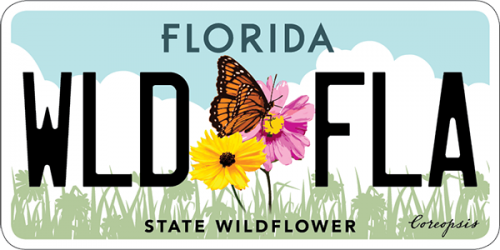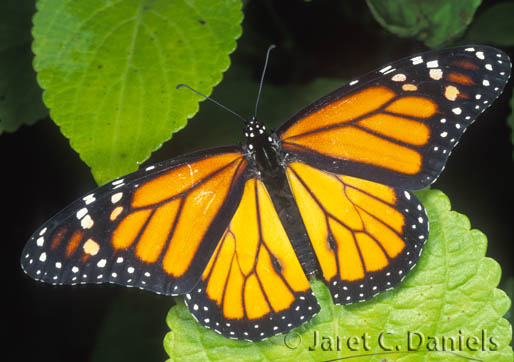- Family name: Nymphalidae/Brush-Footed Butterflies
- General description: Wings orange with black-bordered veins and black borders enclosing small white spots. Male with small black scent patch along inner margin. Ventral hindwing as above but paler yellow-orange and with more prominent white spots in black border. Female duller orange with wider black veins; lacks black scent patch on dorsal hindwing.
- Field Marks: Wings orange with black veins and black borders
- Sexes: Appear similar

- Wingspan: 85-120 mm
- Life Cycle: Egg: Cream, laid singly on host leaves or flowers Mature larva: black with yellow and white transverse bands and a pair of long fleshy filaments on the front and rear. Chrysalis: Green with a black and gold dorsal band on the abdomen
- Number of Generations: Two or more generations
- Flight Season: All year
- Abundance: Common
- Habitat: Fields, meadows, roadsides, parks, pastures, gardens
- Larval Host Plants: Various milkweed including White Swamp Milkweed (Asclepias perennis), Butterflyweed (Asclepias tuberosa), and Pineland Milkweed (Asclepias humistrata)
- Similar Species: Viceroy, Queen
- Additional Information: The most familiar North American butterfly. Larvae feed on milkweed family plants and sequester toxic chemicals that render them and the resulting adults distasteful to certain predators. The bold black and orange coloration advertise this unpalatability. Adults are migratory with most eastern populations overwintering in the mountains of central Mexico; resident breeding populations occur year-round in central and south Florida.
- Range in Florida
 The Florida Wildflowers & Butterflies projects at the Florida Museum are sponsored in part by the State of Florida and the Florida Wildflower Foundation, Inc.
The Florida Wildflowers & Butterflies projects at the Florida Museum are sponsored in part by the State of Florida and the Florida Wildflower Foundation, Inc.
